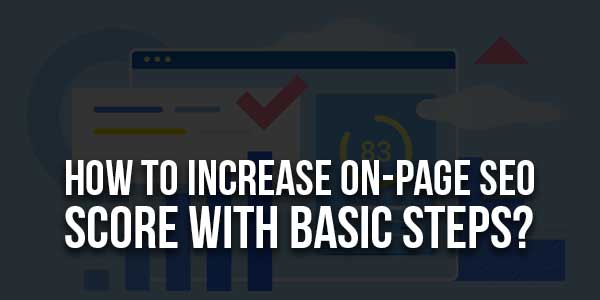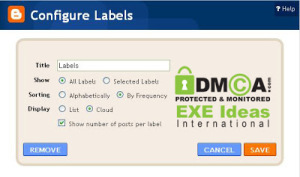
Improving your on-page SEO score is essential for boosting your website’s search engine ranking and attracting more organic traffic. With the right approach, you can make your website more accessible, engaging, and relevant for users and search engines. This comprehensive guide cover the foundational steps to enhance your on-page SEO score, ensuring your site stands out in search results.
Table of Contents
Understanding The Basics Of On-Page SEO:
On-page SEO refers to optimizing individual pages on your website to rank higher and drive relevant traffic. This involves adjusting various elements directly on your web pages, such as content, HTML, and images, to make them more appealing to search engines.
Why On-Page SEO Matters?
On-page SEO ensures your content is clear and relevant to users’ search queries. By optimizing on-page elements, you make it easier for search engines to understand and index your content effectively, improving your site’s chances of ranking higher.
“A strong foundation in on-page SEO is essential for building an online presence and gaining visibility in search results.”
Optimizing Meta Tags For Improved Visibility
Meta tags are essential elements in your HTML that help search engines and users understand the content of your page. Properly optimizing meta tags can significantly improve your page’s click-through rate and visibility.
Key Meta Tags To Focus On:
- Title Tag
- Keep it under 60 characters.
- Include primary keywords naturally.
- Make it engaging to attract clicks.
- Meta Description
- Summarize the page in about 155-160 characters.
- Use relevant keywords naturally but avoid keyword stuffing.
- Ensure it’s compelling to encourage clicks.
- Header Tags (H1, H2, H3, etc.)
- Use the H1 tag for the main title of the page.
- Use H2 and H3 tags to structure subheadings.
- Maintain a logical hierarchy for readability and SEO benefits.
Creating High-Quality Content That Ranks:
Quality content is the foundation of on-page SEO. Not only should it answer user queries effectively, but it should also be optimized for search engines.
Content Optimization Tips:
- Use Relevant Keywords
- Conduct keyword research to find terms relevant to your topic.
- Integrate primary and secondary keywords naturally throughout the content.
- Provide Value And Depth
- Write in-depth articles that cover the topic comprehensively.
- Include FAQs to answer common queries related to the topic.
- Focus On Readability
- Use shorter sentences and paragraphs.
- Avoid jargon, making the content accessible to a broader audience.
“Content that provides genuine value is more likely to rank well, as search engines prioritize quality and relevance over keyword density.”
Enhancing URL Structure For Better SEO:
The URL structure plays a significant role in on-page SEO. A well-organized URL not only looks clean and professional but also signals relevance to search engines.
Tips For Optimizing URL Structure:
- Keep URLs Short And Simple
- Avoid unnecessary words; use keywords relevant to the content.
- Use Hyphens Instead Of Underscores
- Hyphens are preferred for separating words as search engines read them as spaces.
- Include Primary Keywords
- Adding the main keyword makes the URL more descriptive and SEO-friendly.
- Maintain Consistency Across The Site
- Use a consistent URL structure for easy navigation and better indexing by search engines.

Improving Internal Linking For Site Navigation:
Internal linking helps search engines understand the structure of your website while guiding users to related content. A solid internal linking strategy can boost engagement and enhance SEO.
Effective Internal Linking Practices:
- Link To Related Articles
- Direct users to related pages or posts, keeping them engaged on your site.
- Use Descriptive Anchor Text
- Anchor text should be relevant to the linked page to give context to both users and search engines.
- Avoid Overloading Links
- Use internal links sparingly to maintain content readability and flow.
Boosting Page Load Speed:
Page load speed is a crucial factor in both user experience and SEO. Search engines favour faster websites, making page speed optimization a key step in improving your on-page SEO score.
Steps To Improve Page Speed:
- Optimize Images
- Use compressed images without compromising quality.
- Use formats like WebP for faster loading.
- Enable Browser Caching
- This allows visitors to store elements of your website, reducing load time for repeat visits.
- Minify CSS, JavaScript, And HTML
- Remove unnecessary code to make the page lighter and faster.
“A fast-loading website not only enhances SEO but also ensures users stay engaged, reducing bounce rates.”
Leveraging Multimedia For SEO Advantage:
Adding multimedia like images, videos, and infographics can make your content more engaging and visually appealing. This also provides additional SEO opportunities.
Multimedia Optimization Tips:
- Use Alt Text For Images
- Describe images with relevant keywords to improve accessibility and search visibility.
- Embed Relevant Videos
- Videos can boost engagement and time on the page, factors that positively impact SEO.
- Optimize Image Sizes
- Use the correct dimensions to avoid impacting page load speed.
Using Schema Markup For Rich Snippets:
Schema markup helps search engines understand the content better, leading to rich snippets like star ratings and FAQs in search results, which attract more clicks.
Common Schema Markup Types:
- Article Schema
- Ideal for blog posts and news articles, improving click-through rates.
- FAQ Schema
- Perfect for answering common questions in a structured format.
- Product Schema
- Useful for e-commerce sites, displaying ratings, prices, and availability in search results.
- How-To Schema
- Provides step-by-step guidance, which can help rank for instructional queries.
Optimizing For Mobile Usability:
With mobile traffic surpassing desktop, mobile optimization is essential. Google favours mobile-friendly websites, making this an integral part of on-page SEO.
Tips For Mobile Optimization:
- Use A Responsive Design
- Ensure your website adjusts seamlessly across devices.
- Avoid Intrusive Pop-Ups
- Pop-ups should be mobile-friendly, as intrusive elements can harm the user experience.
- Prioritize Readability
- Use readable fonts, adjust button sizes, and ensure content is accessible on smaller screens.
“Mobile optimization isn’t optional anymore; it’s a fundamental aspect of effective on-page SEO.”
Monitoring And Adjusting For SEO Success:
On-page SEO is not a one-time task. Regular monitoring and adjustments are essential to keep your website optimized as search engine algorithms evolve.
Monitoring Tools And Tips:
- Use Google Analytics And Google Search Console
- Track traffic, bounce rates, and ranking positions to assess SEO performance.
- Regularly Update Content
- Keep your content fresh and up-to-date, especially for topics that evolve over time.
- Analyze Competitors
- Study competitors’ on-page SEO strategies to identify potential areas for improvement.
Conclusion:
Increasing your on-page SEO score involves understanding and implementing key optimization strategies across various aspects of your website. From meta tags and content quality to URL structure, multimedia, and mobile usability, each step contributes to a well-rounded SEO approach. With consistent monitoring and improvements, you can enhance your website’s ranking potential, attract more traffic, and provide users with a superior experience. Embrace these basic steps to build a solid foundation for a successful SEO strategy and enjoy the lasting benefits of improved online visibility.


















This blog is beneficial for me…
Welcome here and thanks for reading our article and sharing your view. This will be very helpful to us to let us motivate to provide you with more awesome and valuable content from a different mind. Thanks again.
When I read this article, I got to know about your content and the article skills both are top of the mark. Thanks for sharing this article as this content is very significant for me. I hope you do best afford and keep growing up like this in your future.
Welcome here and thanks for reading our article and sharing your view. This will be very helpful to us to let us motivate to provide you with more awesome and valuable content from a different mind. Thanks again.
This was such a helpful read! I appreciate the way you explained things. It’s clear and practical, and I’m excited to start applying these ideas. Thanks for sharing!
Welcome here and thanks for reading our article and sharing your view. This will be very helpful to us to let us motivate to provide you with more awesome and valuable content from a different mind. Thanks again.
Hello!
Thank you for this insightful post on boosting on-page SEO. I particularly love how you broke down the basic steps into digestible sections, making it easier for anyone, even a beginner like me, to understand. I’ve started applying some of the suggestions, especially focusing on optimizing meta tags and structuring content with header tags. It’s been amazing to see how these small changes can have such a big impact on visibility and click-through rates.
I also appreciate the section on improving mobile usability. With so much traffic coming from mobile devices these days, ensuring that my site is mobile-friendly has definitely become a priority. Your tips on using responsive design and avoiding intrusive pop-ups have already helped improve my site’s user experience. Overall, this post has given me a clearer roadmap for improving my SEO score, and I’m excited to continue implementing your advice! Thanks again!
Welcome here and thanks for reading our article and sharing your view. This will be very helpful to us to let us motivate to provide you with more awesome and valuable content from a different mind. Thanks again.
Hi ,
very nice and impressive blog post
thanking you
Welcome here and thanks for reading our article and sharing your view. This will be very helpful to us to let us motivate to provide you with more awesome and valuable content from a different mind. Thanks again.
Great article! Improving on-page SEO doesn’t have to be overwhelming. Basics like optimizing title tags, using descriptive URLs, and focusing on mobile-friendly design can make a difference. Keep up the awesome content!
Welcome here and thanks for reading our article and sharing your view. This will be very helpful to us to let us motivate to provide you with more awesome and valuable content from a different mind. Thanks again.
Thank you so much for creating this insightful blog! Your effort and dedication to sharing valuable information are truly appreciated. Keep up the amazing work! 😊
Welcome here and thanks for reading our article and sharing your view. This will be very helpful to us to let us motivate to provide you with more awesome and valuable content from a different mind. Thanks again.
Great post! I found it very helpful for my business. Looking forward to more of your insights!
Welcome here and thanks for reading our article and sharing your view. This will be very helpful to us to let us motivate to provide you with more awesome and valuable content from a different mind. Thanks again.